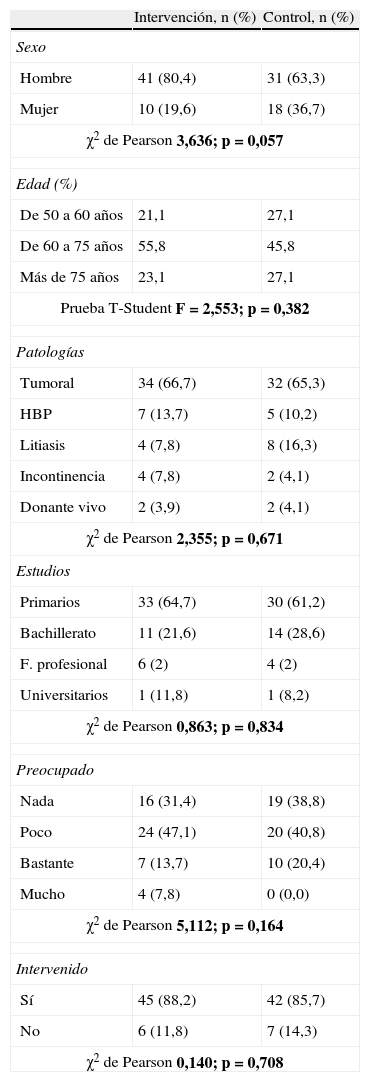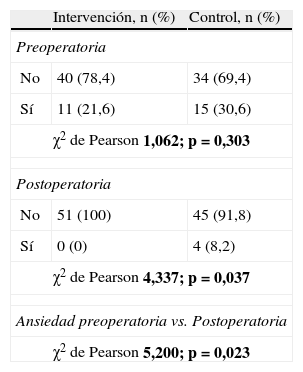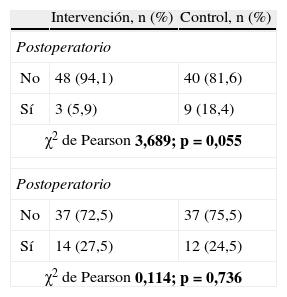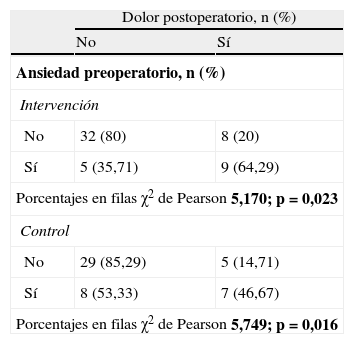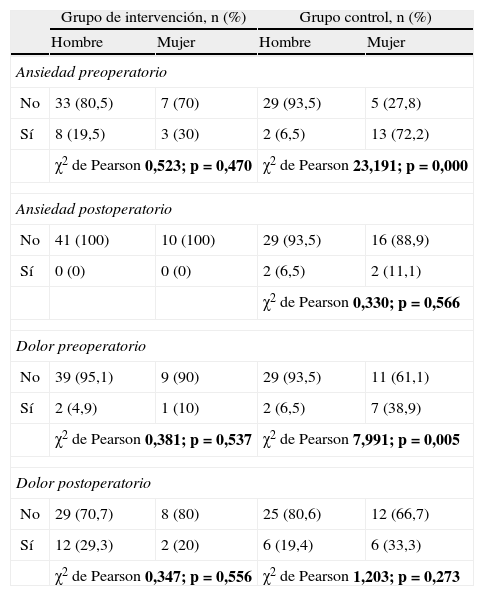El estado de ansiedad prequirúrgico se debe al miedo a las circunstancias que rodean la intervención. La ansiedad provoca incremento en el dolor postoperatorio, prolongación en los días de estancia hospitalaria que repercuten directamente en los costes de la atención.
ObjetivoEvaluar los efectos de un tríptico informativo en anestesia sobre la ansiedad y el dolor posquirúrgicos en pacientes sometidos a cirugía urológica en el Hospital Miguel Servet.
Material y métodosEstudio prospectivo cuasiexperimental de 100 personas; 51 formaron parte del grupo de intervención a los que se les entregó tríptico informativo y otras 49 formaron el grupo control. En ambos grupos se evaluó la ansiedad mediante la Escala Hospitalaria de Ansiedad y Depresión y el dolor con la escala visual analógica, en el periodo preoperatorio y postoperatorio.
ResultadosCien pacientes, el 72% varones y el 28% mujeres, con una media de edad de 67,3 y desviación estándar de 9,7 años. El 21,6% del grupo de intervención presentaron ansiedad en el preoperatorio y un 0% en el postoperatorio. El 30,6% del grupo control presentaron ansiedad en el preoperatorio y un 4% en el postoperatorio (χ2 de Pearson 5,20; p=0,023). La relación entre la ansiedad preoperatoria y el dolor postoperatorio indican una relación directa (χ2 Pearson 10,519; p=0,001).
ConclusionesEl disponer de una buena información sobre el proceso quirúrgico reduce los niveles de ansiedad en el periodo postoperatorio.
The preoperative anxiety state is mainly caused by the fear of the circumstances surrounding the intervention. Anxiety causes increased postoperative pain, and a prolonged length of stay in hospital, which directly affect the cost of care.
ObjectiveTo evaluate the effects of providing an anaesthesia information leaflet on postoperative anxiety and pain in patients undergoing urological surgery in the Miguel Servet Hospital.
Material and methodsA prospective quasi-experimental study of 100 cases, 51 of whom made up the intervention group who received the information leaflet, with the remaining 49 cases being in the control group. The Hospital Anxiety and Depression Scale and the visual analogue scale for pain were assessed in both groups, before and after surgery.
ResultsOf the 100 patients, 72% were male and 28% female, with an average age of 67.3 years (standard deviation, 9.7). In the intervention group, 21.6% showed anxiety before surgery and 0% in the postoperative period. In the control group 30.6% presented anxiety during the preoperative period and 4% in the postoperative period (χ2 Pearson 5.20, P=.023). The study showed a direct relationship between preoperative anxiety and postoperative pain (χ2 Pearson 10.519, P=.001).
ConclusionsGood information about the surgical process reduces anxiety levels in the postoperative period.
Artículo
Comprando el artículo el PDF del mismo podrá ser descargado
Precio 19,34 €
Comprar ahora






